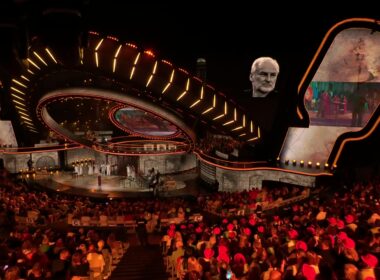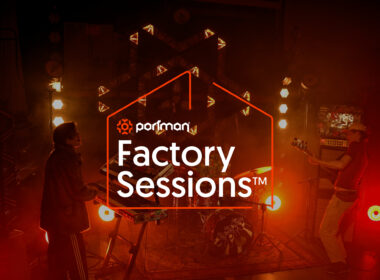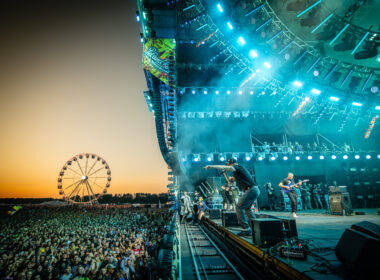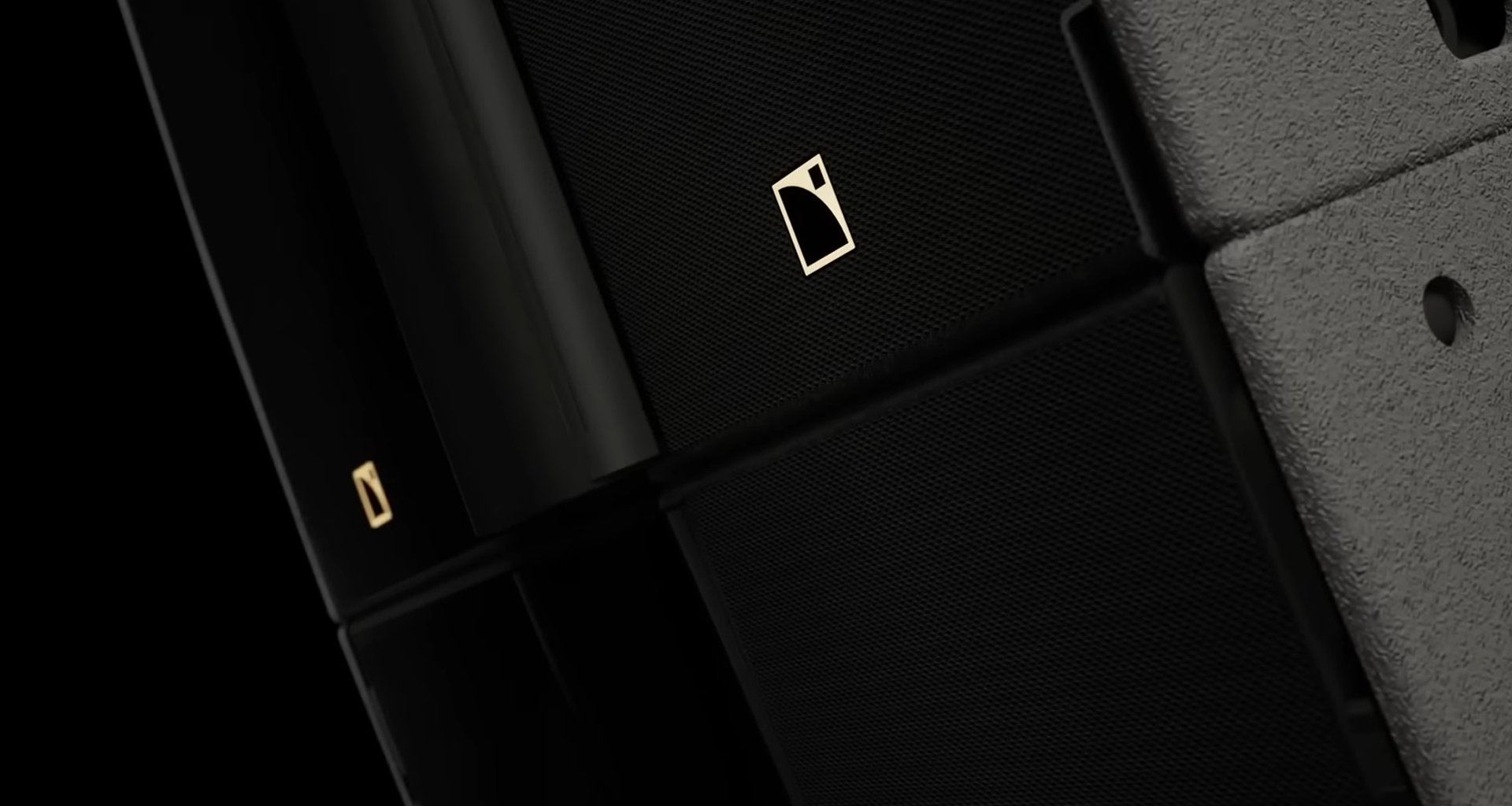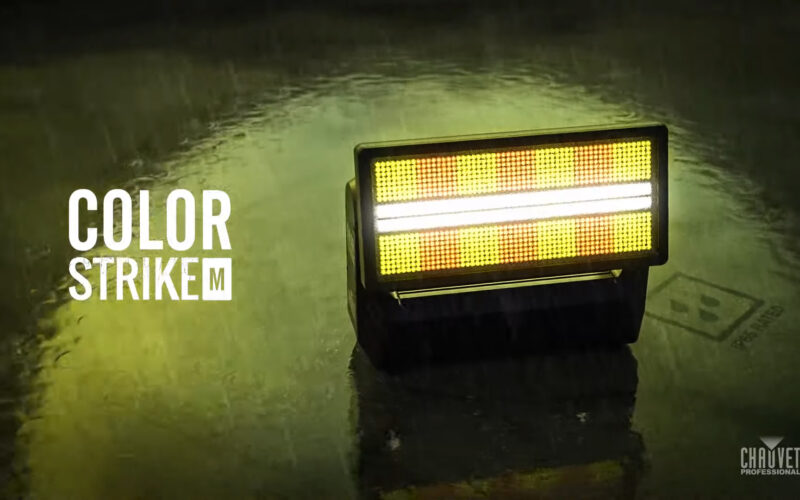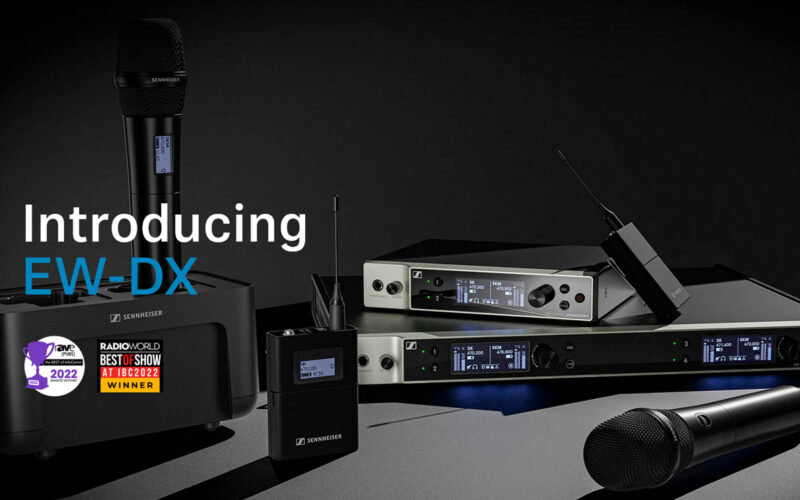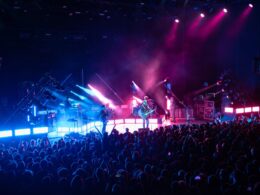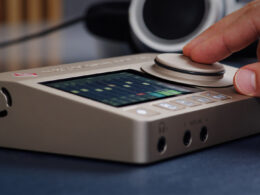Kto w branży pro audio pracuje chociaż chwilę, temu na pewno obiła się o uszy nazwa L-Acoustics. Francuska marka od lat dostarcza nowoczesne technologicznie, riderowe i świetne brzmieniowo systemy audio na potrzeby koncertów i eventów na całym świecie. Będąc jednym z liderów na rynku estradowym.
Wszystko zaczęło się w 1984 roku gdy Dr. Christian Heil, pasjonat muzyki na żywo, zainspirowany niesamowitym koncertem Pink Floyd (ok 1977 roku) założył markę L-Acoustics. Sześć lat później wraz z wynalezieniem technologii źródła liniowego, Dr. Heil zmienił sposób w jaki nagłaśniamy koncerty. Niespełna 2 lata później świat ujrzał system V-DOSC. Zaś 24 lata później przedstawiono immersyjną technologię L-ISA. Prawie trzy dekady badań i rozwoju swoich produktów. Czas pełen sukcesów, ale czasami też i potknięć (któż nie wspomni z łezką w oku sposobu riggingu w systemie dV-DOSC?) doprowadził nas do roku 2023. Kiedy to 17 kwietnia L-Acoustics zaprezentował nową koncepcję systemu wielkoformatowego.
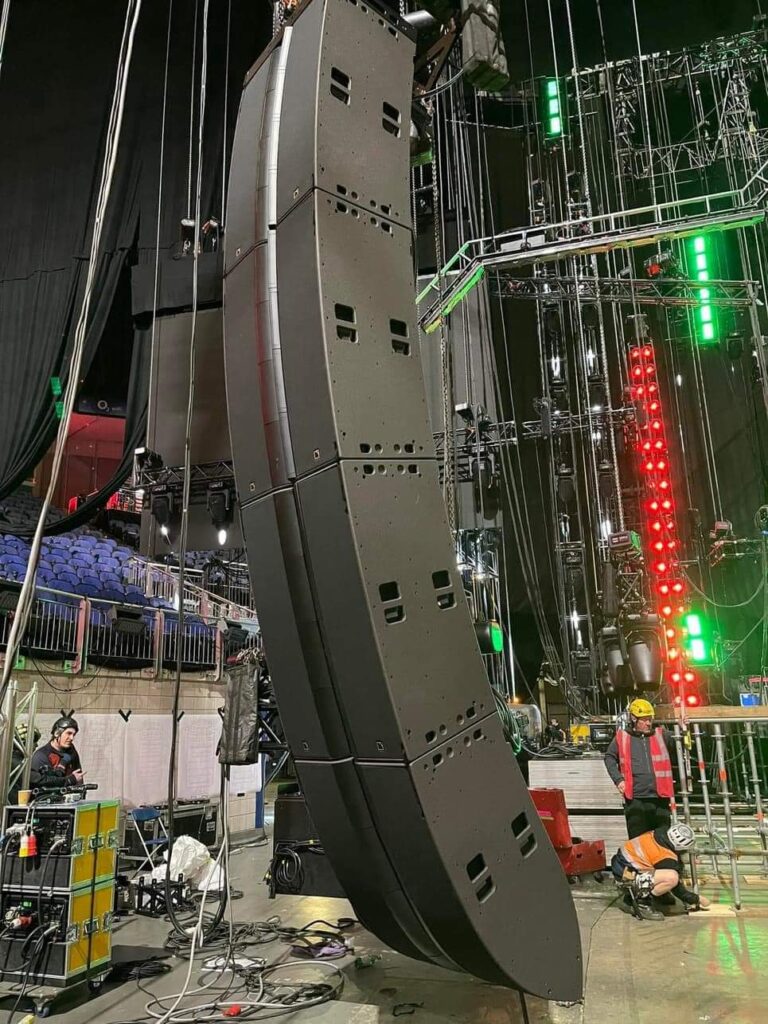

Co nowego można jeszcze wymyślić?
Człowiek zadałby sobie pytanie: a cóż to może być, mamy systemy Line Array, systemy sterowane wiązką, mocno wchodzi na rynek technologia immersyjna. Francuzi natomiast zadali sobie pytanie: a czemu by nie wielkoformatowy system stało kątowy?
I tym chyba właśnie okazuje się być Seria L. Wielu z was pewnie widziało już zdjęcia, które wyciekły z jednej z imprez w Anglii, gdzie testowano nowe dziecko L-acoustics. Chwilę przed premierą na kanale znanego realizatora z USA Dave’a Rata wpadł film na temat L2.
Some technicalities.
Ale do rzeczy, Czym jest L2? L2 to system w którym widzę cztery główne założenia konstrukcyjne. Po pierwsze moduły mają stały kąt propagacji pionowej. Producent konsekwentnie wdraża rozwiązanie panflex, czyli kontrolowanie propagacji poziomej poprzez regulowane wyloty driverów. Co ważne L2 jest kolumną o budowie kardioidalnej zmniejszającej ilość zbędnej energii akustycznej wypromieniowywanej w kierunku sceny.
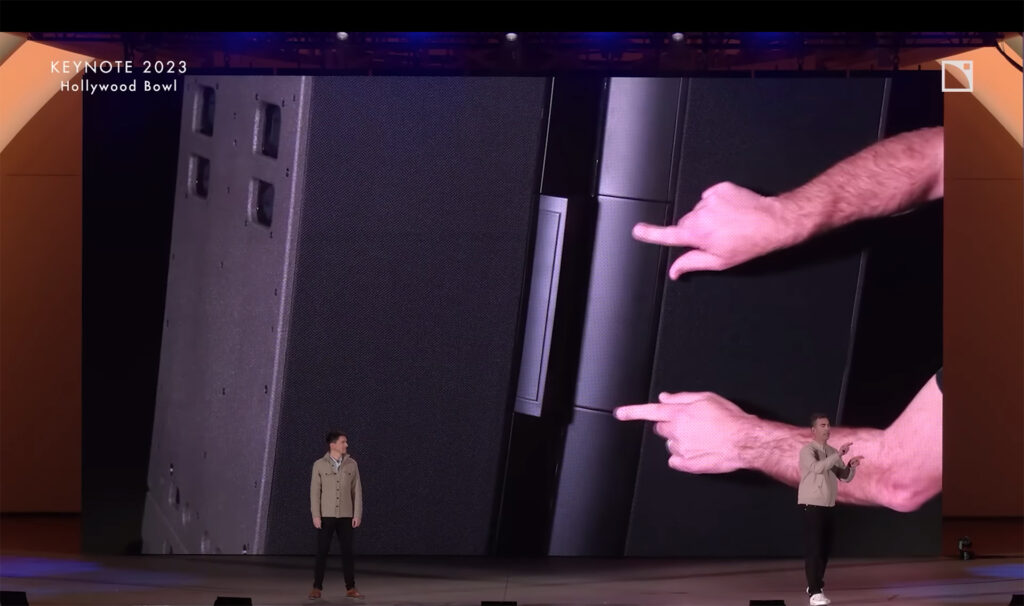
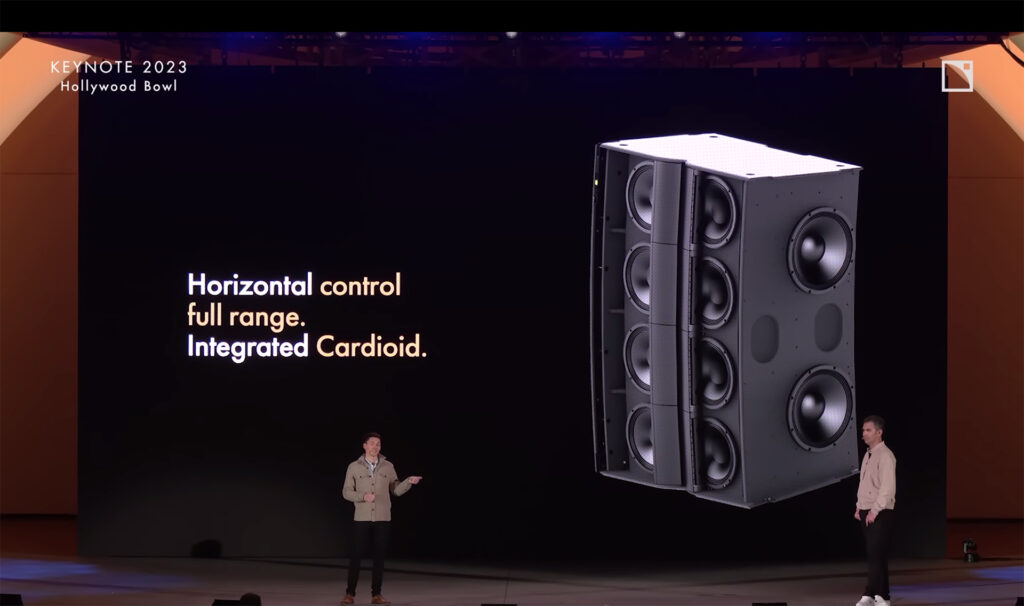
Każdy przetwornik kolumny (w przypadku przetworników 10 cali – para przetworników), jest napędzany oddzielnym kanałem wzmacniacza z oddzielnym processingiem DSP. Konstrukcyjnie L2 jest mocno nowoczesną i niestandardową kolumną. W jej skład wchodzą:
- 8 przetworników 10 calowych grających do przodu
- 8 driverów kompresyjnych 3 calowych
- 4 oddzielnie sterowanych przetworników – 12 calowych w układzie bocznym, odpowiadających za działanie kardioidy, która wg producenta, daje idealną koherencję z przodu kolumny, jednocześnie pozwalając na ponad 20dB mniej zbędnego dźwięku z tyłu głośnika od 200Hz w dół.
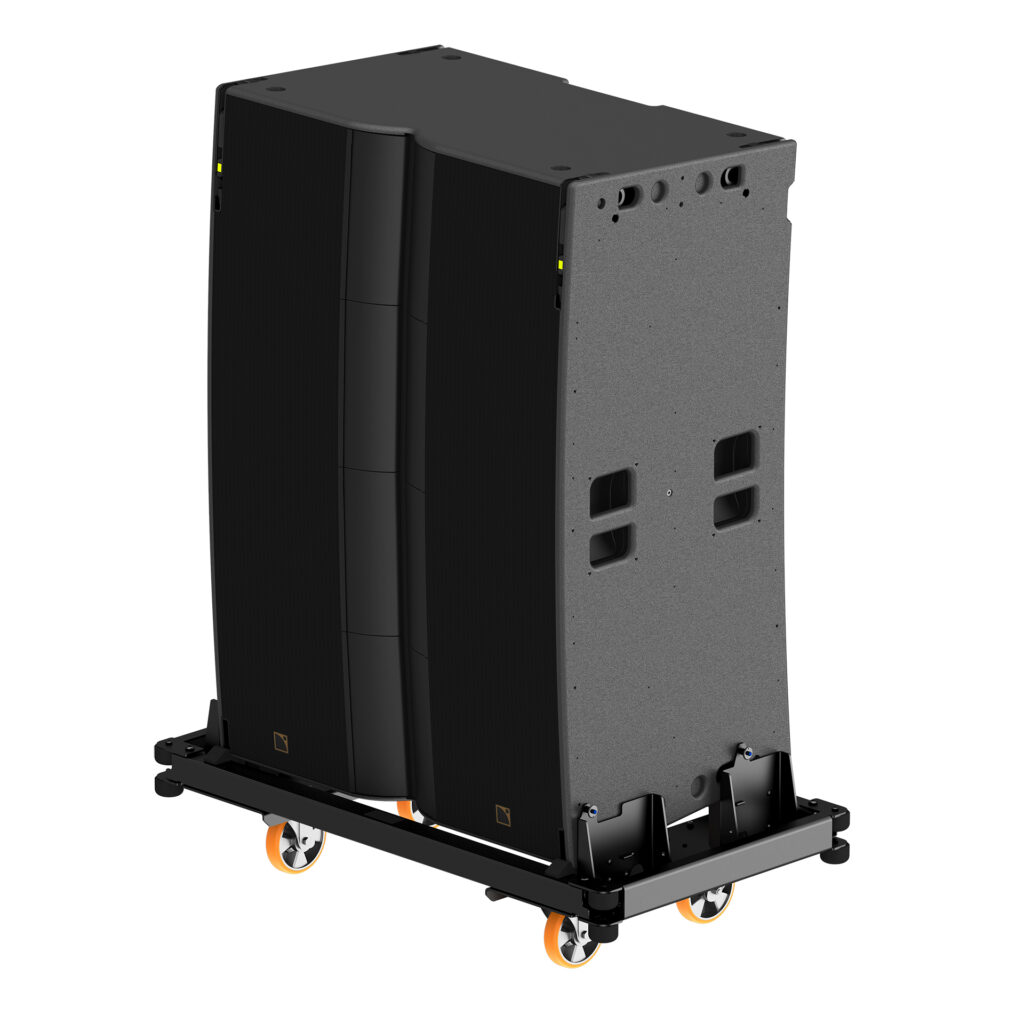
Jeśli przyjrzycie się z bliska budowie L2 to nie sposób nie pomyśleć, że wygląda ona jak połączenie 4 modułów systemu liniowego. To wrażenie wzmaga fakt, że wyloty driverów z technologią panflex są podzielone na 4 strefy. Tu warto wspomnieć o tym, że L2 wyprzedziło każdy dostępny system liniowy pod kątem ARF (active radiation Factor). Czyli aktywnego współczynnika promieniowania. W skrócie chodzi o to, żeby źródło promieniujące było jak najbardziej spójne na przestrzeni całego grona. Im mniej więc łączeń i elementów riggingu tym źródło spójniejsze. Dotychczasowe moduły liniowe nie były wstanie przekroczyć 90% ARF. W przypadku L2 producent zarzeka się, że osiągnęli imponujące 99%. Ma się to przekładać na bliskość, spójność i realne odzwierciedlenie generowanego dźwięku.
Propagacja jednej paczki w pionie to 10 stopni (dużo, nie dużo?), w poziomie zaś dla każdej części kolumny możemy wybrać kąty 110° lub 70° symetrycznie oraz 90° asymetrycznie (w lewo lub w prawo).
Trochę inaczej ma się sprawa z kolumną L2D. Jest pierwszą paczką typowo downfillową w portfolio Fancuskiej marki. Tutaj cała kolumna ma 60° propagacji pionowej, dwa górne moduły posiadają taki sam system panflex jak w L2, natomiast dwa dolne mają stałą progresywną charakterystykę propagacji poziomej od 110° do 140° ( wygląda to na rozwinięcie patentu z L-acoustics SYVA). W przedstawionym pakiecie 4 kolumn w gronie pozwala to więc na maksymalną propagację pionową 90° i poziomą od 70° do 140°.

A czym to zasilić?
Jeśli chodzi o napęd to dedykowanym wzmacniaczem do serii L2 jest przedstawiony razem z systemem touringowy odpowiednik LA7.16i czyli LA7.16. Wzmacniacz ten zasługuje na oddzielny wpis, wspomnę więc tylko, że pozwala on napędzić 16 oddzielnych głośników, z pełnym DSP dla każdego kanału (z dotykowym mini wyświetlaczem do kontroli ustawień), jednocześnie posiadając 16 wejść cyfrowych w technologii AVB, 2 wejścia AES i pojedyncze wejście analogowe. Nadmienię jeszcze na koniec, że do LA7.16 i LA2, producent wprowadził nowy system kablowy oparty o 37 pinowe okrągłe złącze typu Veam, z dedykowanym okablowaniem 32×1,5mm2.
Technologia PULS i instalacja systemu.
Wracając do L2 i L2D. L-acoustics wraz z wprowadzeniem nowych produktów, sięgnął chyba w końcu – a przynajmniej częściowo – do zdobyczy technologii sterowania wiązką. Przedstawiona na prezentacji technologia wykonania PULS (Progressive Ultra-dense Line Source) związana z budową kolumny oraz zintegrowana w oprogramowaniu Soundvision i LANM w połączeniu z nowym zestawem auto filtrów pozwala… zawęzić propagację pionową pomimo fizycznej propagacji zainstalowanego grona. Służy do tego suwak Dimm w programie Soundvision, ograniczający propagację od dołu grona.
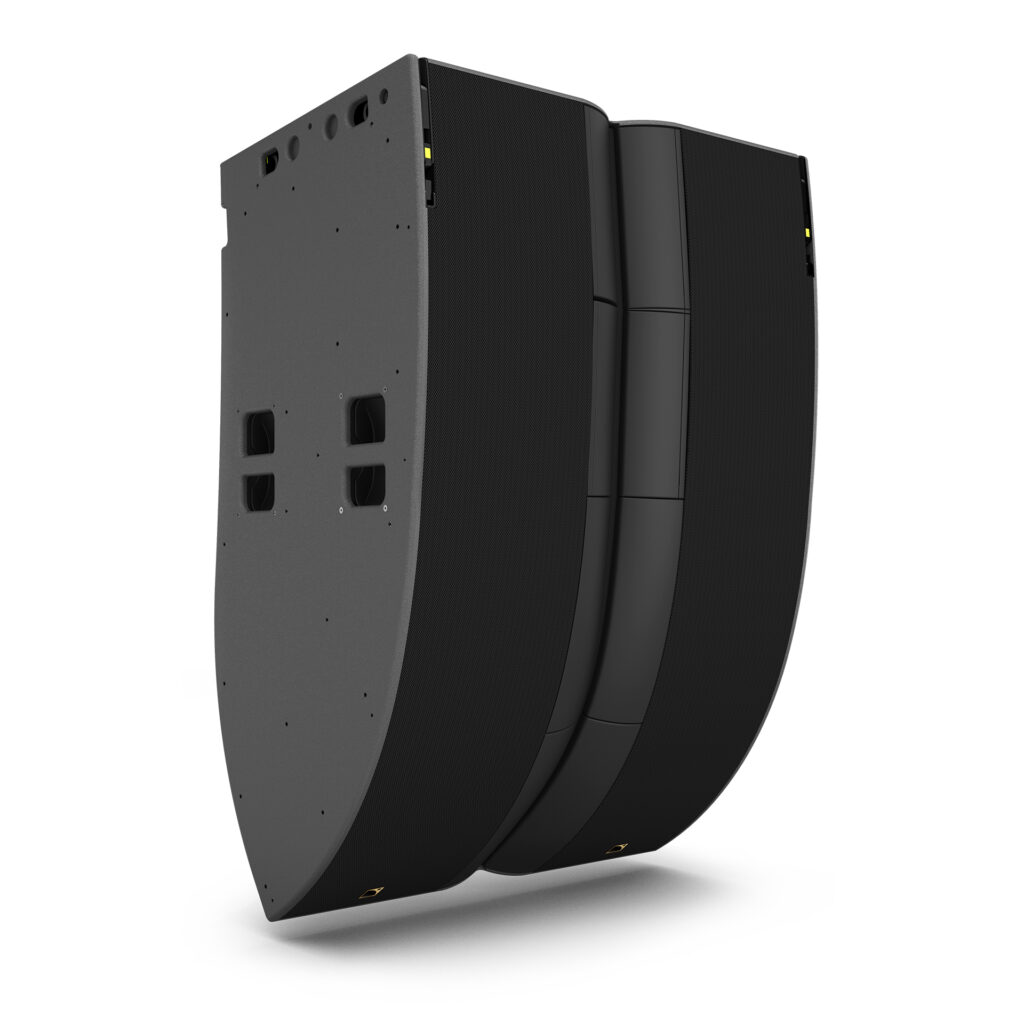

Czy to faktycznie element sterowania wiązką czy całkowicie nowe podejście do tematu?
Nie wiem. Wiem natomiast, że w połączeniu z technologią Panflex oraz zintegrowaną kardioidą, bardzo możliwym jest, że francuzi zaprojektowali jedno z potężniejszych na rynku narzędzi. Pozwalających przesyłać dźwięk tam gdzie jest on potrzebny – czyli na widownię. Co zaś się tyczy riggingu i konfiguracji. Producent położył mocny nacisk na przyśpieszenie instalacji systemu i zminimalizowanie błędów użytkownika.
System: jeden wzmacniacz – jeden kabel – jedna paczka zmniejsza zdecydowanie ryzyko błędu w połączeniach. Mała liczba modułów w gronie i brak zmiennych kątów między kolumnami powoduje, że nawet młody adept techniki estradowej poradzi sobie z szybkim i bezbłędnym zainstalowaniem L2. (a niech pierwszy rzuci kamieniem ten, kto nie pomylił kątów i trzeba było zjechać gronem na dół by je poprawić).
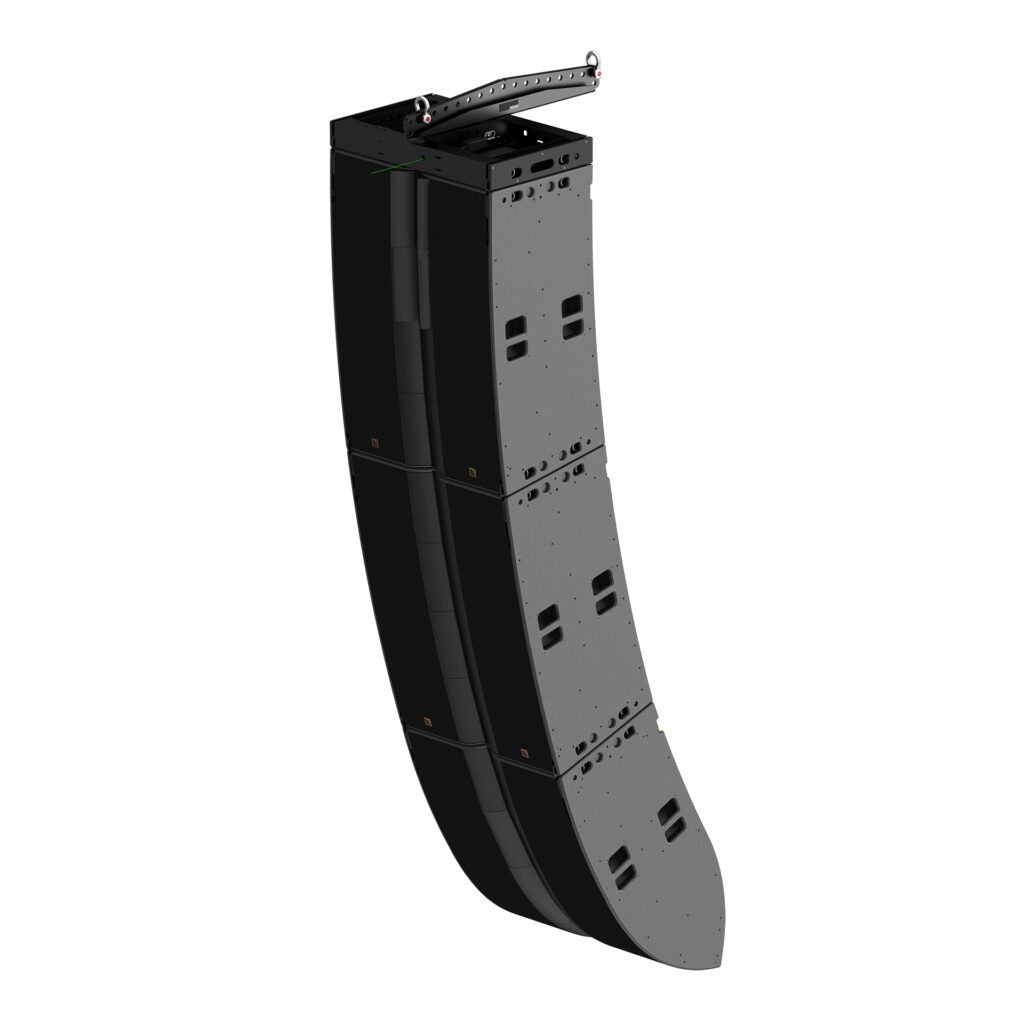
Warto jednak pamiętać, że jest to sprzęt raczej na większe wydarzenia w halach, arenach bądź plenerach (z dobrym bezpośrednim podjazdem pod punkt montażowy). Zapytacie dlaczego? Ponieważ waga 158kg w przypadku L2 zasmuci nawet najtęższe tytanowe kręgosłupy z TSE. Nie chciałbym się znaleźć w sytuacji, gdyby tego kolosa trzeba było gdzieś wnieść po schodach czy nawet wrzucić do busa bez trapu.
W tym miejscu pozwolę Sobie na moment felietonowy i jednocześnie subiektywny.
Nie sposób czasami odnieść wrażenia, że L-acoustics w świecie dźwięku jest trochę jak Apple w świecie elektroniki użytkowej. Piękny design, zamknięty ekosystem, coraz wyższe ceny oraz całkiem mocne przeświadczenie, że jest się najlepszym i najbardziej innowacyjnym. A przecież, sterowanie wiązką czy kolumny o konstrukcji kardioidalnej to żadna nowość (wystarczy spojrzeć na produkty marki Fohhn Audio, D&B czy świetnie znany Subbas CD18 od NEXO).
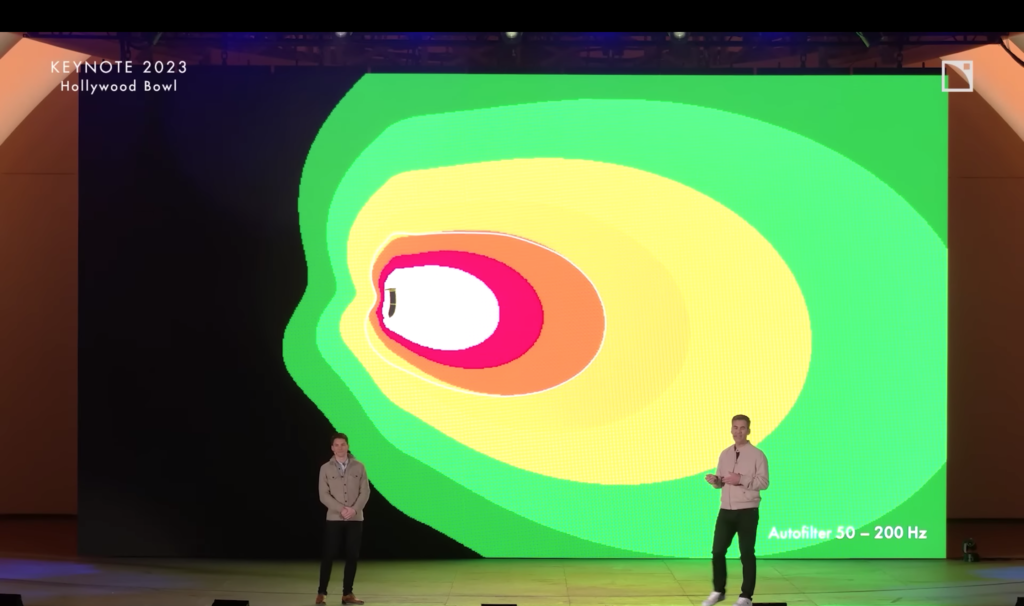
Pomimo tych podobieństw nie można jednak odmówić francuzom jednego. Obecnie ich produkty to naprawdę jeden wielki, doskonale działający ekosystem. Zaczynając od projektowania w Soundvision, przez zarządzanie w LANM, na okablowaniu i riggingu kończąc. Ich design jest spójny, a głośniki doskonale wyglądają. Przecież pracujemy w branży kreatywnej/artystycznej, więc czemu by nie. Co zaś do wprowadzanych technologii. Nawet jeśli L-acoustics wdrażają jakieś rozwiązania później niż konkurencja, to możemy się spodziewać, że będą one nadzwyczaj dopracowane i przyjazne nawet dla początkujących inżynierów systemu. Przyznam, że osobiście na to liczę w tym naprawdę innowacyjnym produkcie. Parę pytań, i parę wątpliwości
Czy L2 wyprze tradycyjne systemy Line Array?
Bardzo wątpię. Na pewno nie wydarzy się to w ciągu najbliższych kilku lat. Tak jak systemy line array (pomimo usilnych prób niektórych z tej branży) nie wyparły paczek typu point source. Również tu znajdą się miejsca gdzie użycie wielomodułowego systemu z większymi możliwościami kątowania mogłoby dać lepsze rezultaty. (być może odszczekam to jak mocniej zapoznam się z technologią)
Czy produkt ten przyjmie się na polskim rynku?
Jest na to szansa, ale znowu raczej zainteresują się nim Ci którzy dużo grają po halach i stadionach lub plenerach. Na pewno przy odpowiednich warunkach dostępu do obiektu i punktu riggingowego czas potrzebny na montaż i konfigurację zachwyci montazystów i organizatorów eventów, którzy często produkują wydarzenia w nurcie tzw „polish production”.
Czy L-series to paczki wymyślone również z myślą o immersyjnym systemie L-ISA?
Nie jestem specjalistą w temacie ale myślę, że jak najbardziej. W końcu wielokanałowe sterowanie paczką tego typu może pozwolić nam na jeszcze precyzyjniejsze pozycjonowanie dźwięku w przestrzeni i zwiększenie rozdzielczości pozycji.
Pytań jest wiele, a na większość z nich odpowiedź przyniesie pewnie czas.
Jednego jestem natomiast całkiem pewien. Współczuję temu kto jadąc na „joba” przez całą Polskę zapomni kabla do L2ki bo na mieście na pewno go nie pożyczy…
Po więcej oczywiście zapraszamy na stronę producenta i Polskiego dystrybutora.
Manufacturer: L-AcousticsDistributor: Audio Plus Sp z o.o.


